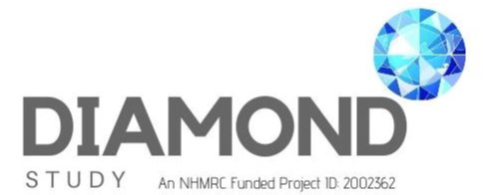Dimensional Attention Modelling for Neglect Detection (DIAMOND study): A novel application for brain injury
Project Title : Dimensional Attention Modelling for Neglect Detection (DIAMOND study): A novel application for brain injury
: Dimensional Attention Modelling for Neglect Detection (DIAMOND study): A novel application for brain injury
Funding Sources: National Health and Medical Research Council (NHMRC) Ideas Grant, Metro South Health (MSH) Project Grant, Bionics Queensland Challenge 2020 Competition – First Prize in AI-Enabled Bionics
Project Overview: Cognitivedisability following brain injury often remains hidden yet has profound consequences for the individual. This project focuses on a condition known as unilateral spatial neglect, which often follows brain injury and causes an inability to pay attention to visual space opposite to the injury. A classic symptom is that a person with neglect may only eat food from one side of their plate. Neglect is not simply a problem with vision since the person can locate objects when these appear in isolation. Instead, neglect reflects a problem of control – the neural connections allowing goal-directed action have been selectively affected. Neglect is among the most significant predictors of functional recovery following brain injury and results in difficulties returning to employment and independent living, among other areas.
This project investigates the prevalence and severity of neglect in brain injury populations using our new assessment system, The Attention Atlas, based on virtual reality (VR). VR involves wearing a headset and using hand controllers that allow naturalistic interaction with a computer-simulated virtual world. This allows precise and detailed attentional mapping that incorporates head, hand, and eye movements.
In daily life, people live in and interact with three-dimensional environments, with objects appearing in front, above, below, and behind. Neglect is usually understood as an attentional bias along the horizontal dimension, but recent research suggests that neglect also affects attention on the vertical and depth dimensions. Detailed mapping of neglect requires these additional dimensions. The Attention Atlas makes this possible.
Project Aims: Feasibility studies aim to assess The Attention Atlas’ procedural, scientific, and clinical feasibility. The project includes six studies relating to each of these feasibility domains. In iterative development cycles, we will use codesign to directly involve patients and clinicians in development to improve the system’s usability and diagnostic capability.
Current Status: We have begun recruitment and testing at Logan Hospital and will soon begin at Gold Coast University Hospital. Preliminary results indicate that The Attention Atlas is scientifically and clinically feasible. The system can identify individuals with neglect, even in cases when traditional assessments do not. The system also provides sensitive measures of general (spatially independent) attentional performance in brain injury populations.
Project Significance: VR provides high-fidelity and relatively inexpensive systems, facilitating adoption in the clinic and at home, providing new opportunities for rehabilitation and telehealth. VR allows detailed recording of cognitive and motoric performance including spatiotemporal characteristics, and the opportunity to perform standardised repeated measurements to quantify recovery longitudinally. The Attention Atlas strives to be a user-friendly, interpretable, inexpensive, and portable system that provides new data for diagnostics and therapeutics.
Expected Outcomes: The Attention Atlas will provide innovative attention assessments that may be more sensitive and informative than current methods, improving estimates of neglect prevalence and severity. The attention maps will increase the understanding of neglect, specifically, and cognitive disabilities, more generally. The feasibility studies will improve the system’s usability and diagnostic capability. This will increase the likelihood of clinical uptake and may inform future larger scale validation investigations. This project may inform personalised therapeutics and enable new rehabilitation methods. These methods involve virtual worlds and everyday realties, improving the lives of brain injury patients.

